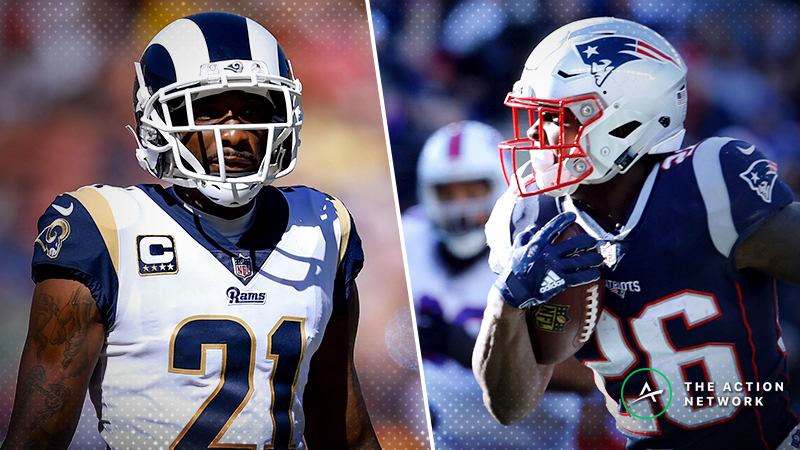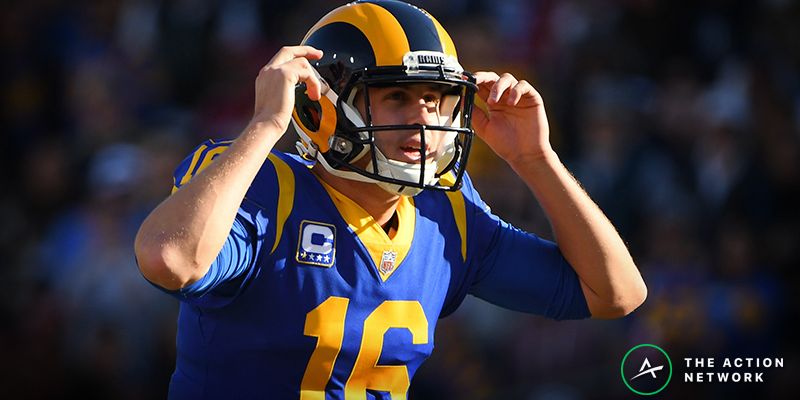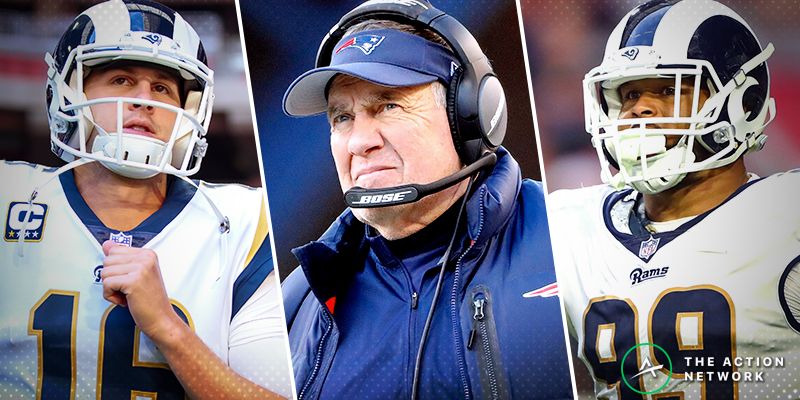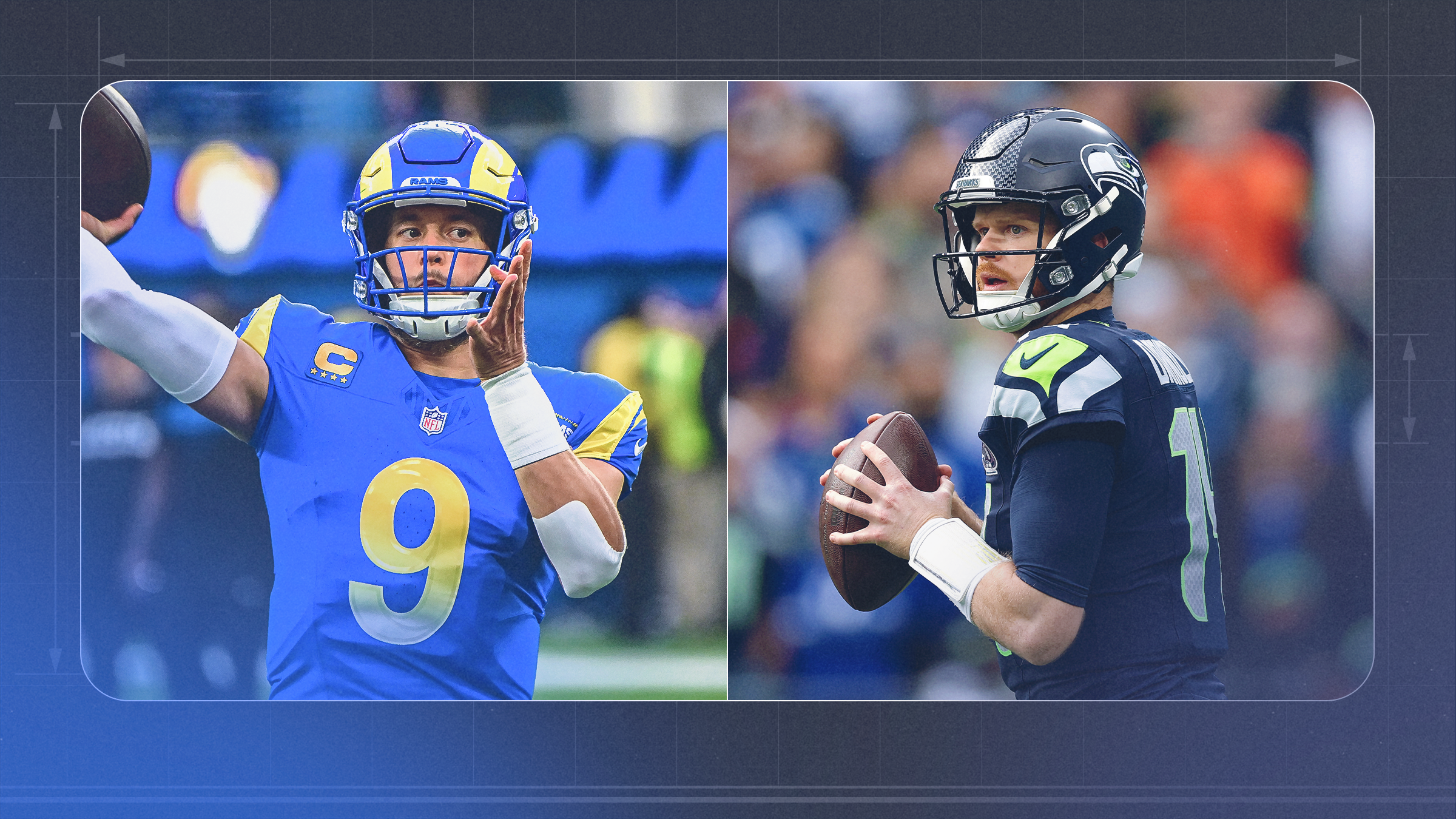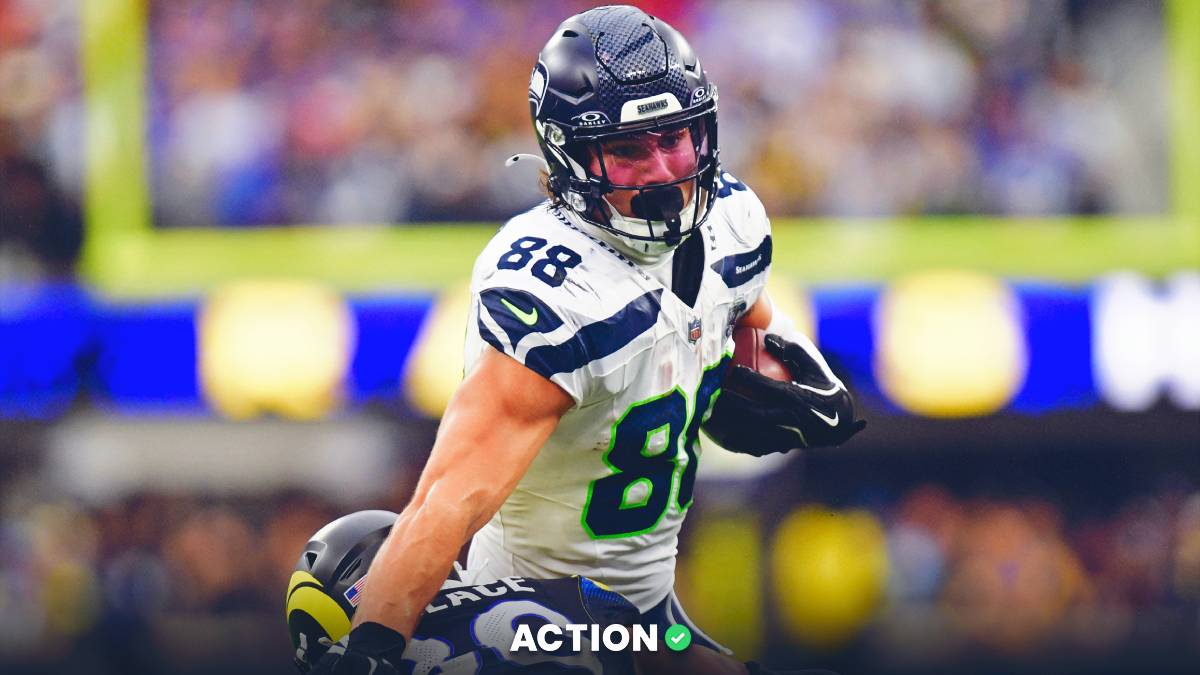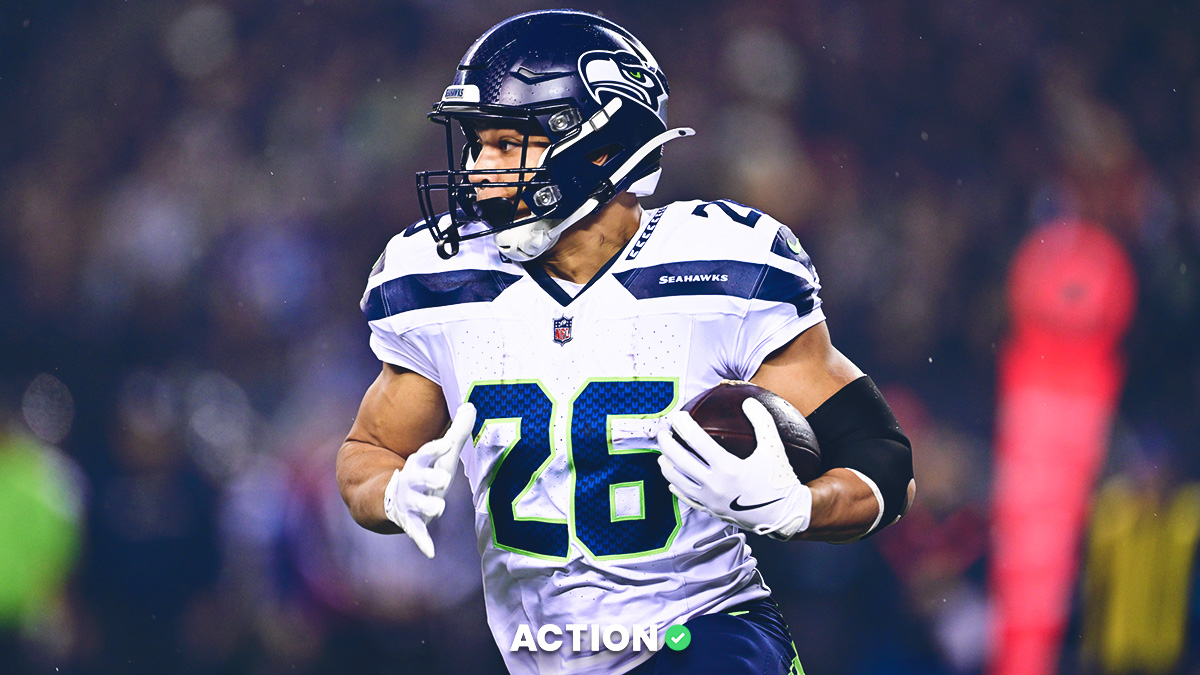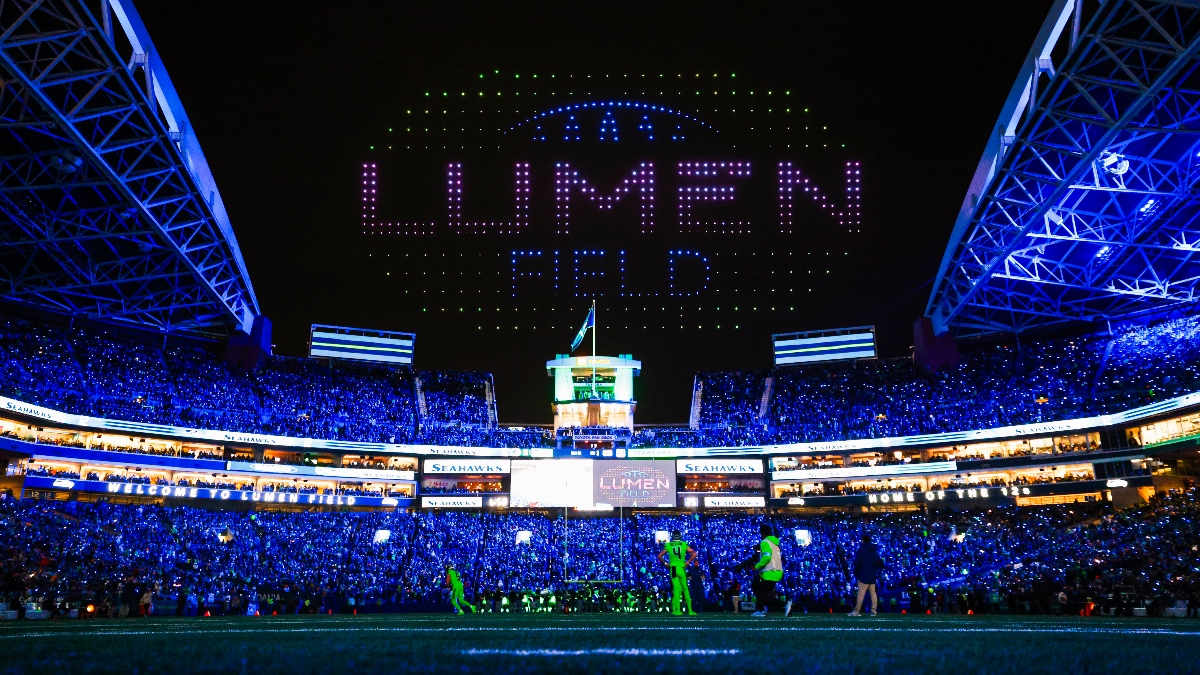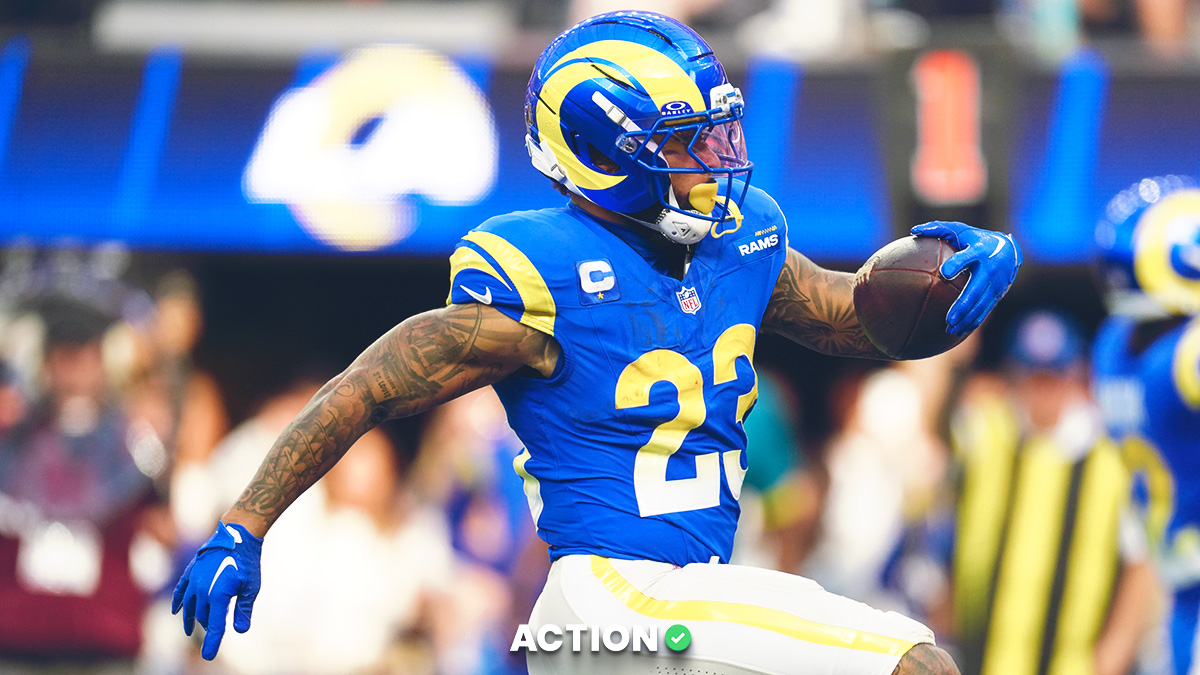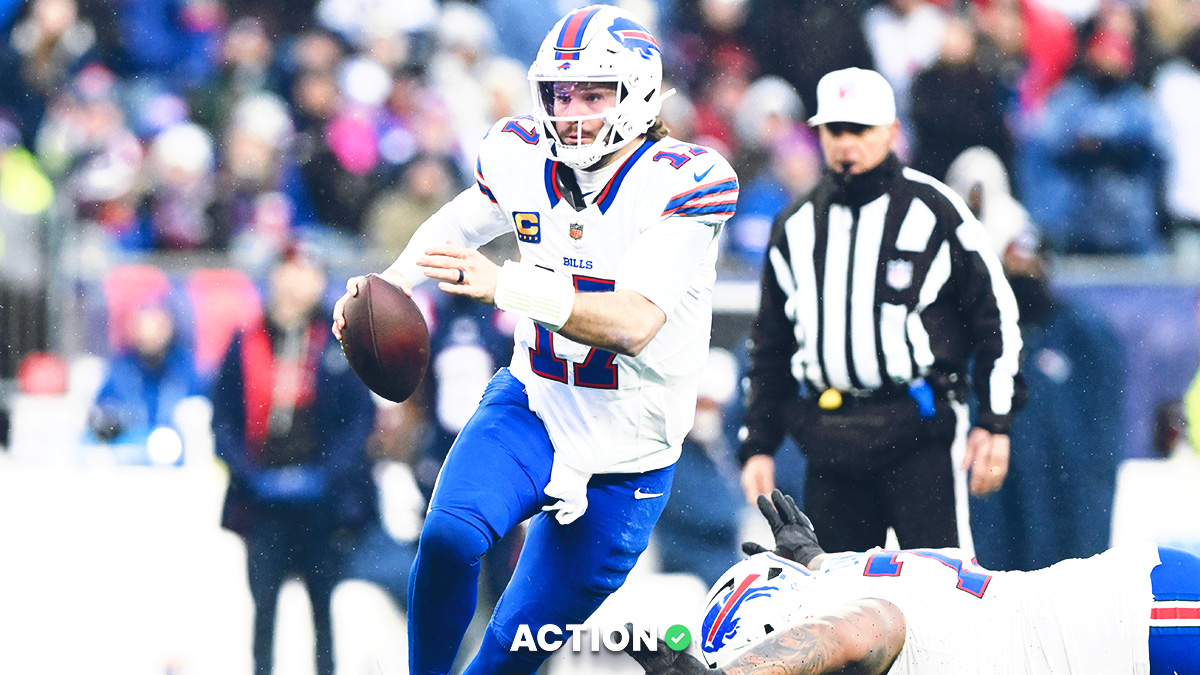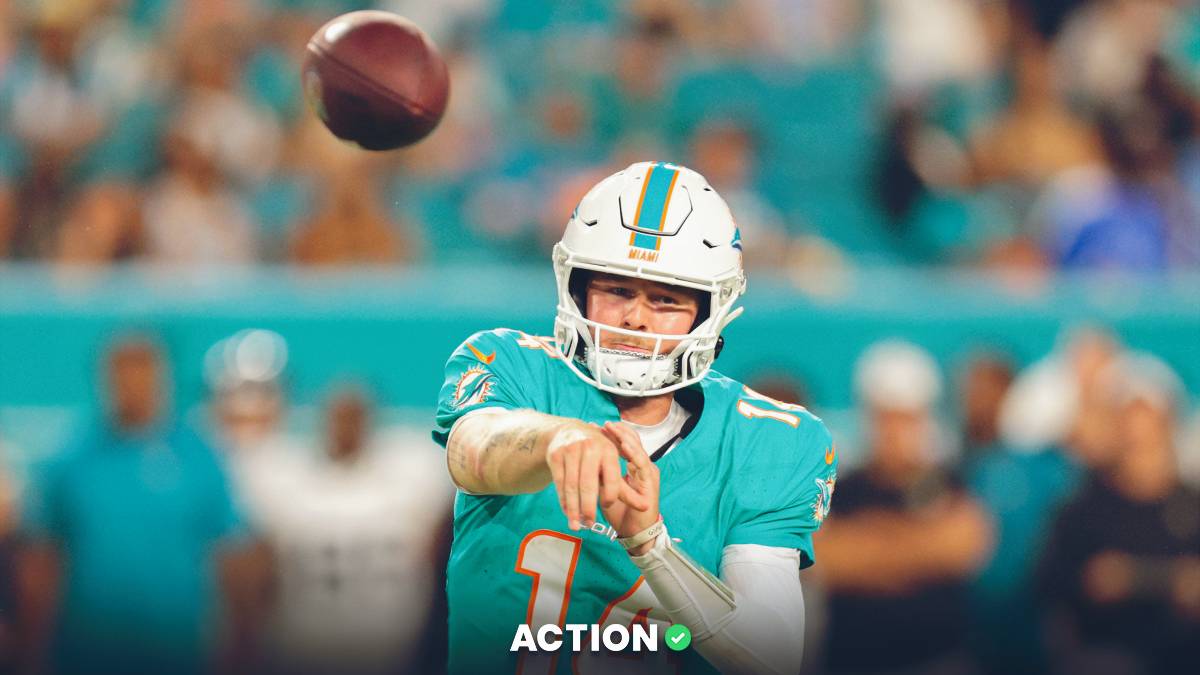- Below is an extensive breakdown of key matchups for Super Bowl 53 to leverage when betting on Rams-Patriots.
- Ian Hartitz covers how Sony Michel could be primed for a big game, why Jared Goff could struggle to throw deep and more.
We're breaking down key matchups in Super Bowl 53 between the New England Patriots and Los Angeles Rams. And by digging into matchup-specific stats, we should be able to identify the biggest mismatches to leverage when betting on or setting fantasy lineups for the big game.
This manifesto includes analysis on:
- Directional Passer Rating
- Yards Per Attempt by Position
- Pressure Rate by Position
- Directional Adjusted Line Yards per Rush
- WR/CB Snap and Physical Profiles
- WR/CB Combined Yards Per Route Run
Let's dig in.
Note: This data is based on what has happened in Weeks 1-17 unless otherwise noted.
Quarterbacks
Jared Goff and Tom Brady made some huge throws during their respective conference championship wins, and there's definitely no love lost between them.
Jared Goff = gambler
Tom Brady = bookiepic.twitter.com/pDLxLk0yEl
— The Action Network (@ActionNetworkHQ) January 29, 2019
We can calculate how well Brady and Goff are set up when throwing to different areas of the field with help from Sharp Football Stats. Pro Football Reference also provides enough information to calculate each offense’s and defense’s yards per attempt to each position.
- Combined Directional Passer Rating: The sum of each quarterback’s passer rating to each area of the field and the opposing defense’s passer rating allowed to the same area. A higher number is better for the quarterback (green), while a lower number is good news for the defense (red).
- Combined Position-Specific Yards per Attempt: The sum of each quarterback’s average yards per attempt to each position with the opposing defense’s yards per attempt allowed to the same position. A higher number is better for that position and quarterback (green), while a lower number could lead to a more definitive defensive advantage (red).
- Brady's ability to beat defenses deep down the left sideline has been compromised during Josh Gordon's absence. Flash Gordon was literally the most-efficient target of Brady's career (minimum 50 targets).
- Phillip Dorsett has admirably picked up the slack, scoring more touchdowns (four) in seven games without Gordon this season than he did in 43 games between 2015 and 2017 (three).
- The next best spot for Brady to target is underneath in the short-middle area of the field against the Rams' underwhelming group of linebackers. This should be good news for James White and Rex Burkhead.
- Rob Gronkowski is also set up well against a Rams defense that allowed the seventh-most DraftKings points per game to tight ends this season. Neither the 5-foot-8, 184-pound Lamarcus Joyner nor the 6-foot, 208-pound John Johnson should be able to physically hang with the 6-foot-6, 264-pound Gronk.
Rob Gronkowski per-game ranks among all tight ends ever (min. 50 games) …
Receptions: 4.5 (7th)
Yards: 68.4 (1st)
TDs: 0.69 (1st, also nice)… 🐐 pic.twitter.com/vPasL9Tgo1
— Ian Hartitz (@Ihartitz) January 28, 2019
- Goff isn't set up particularly well with the deep ball to any area of the field. He also boasts a number of concerning historical splits: Away from home, without Cooper Kupp and against man-heavy defenses.
- There's room for Goff to attack the Patriots in the underneath areas of the field, especially to the left and in the middle. Todd Gurley certainly wouldn’t be the first running back to exploit the Patriots linebackers this season: Seven managed to catch at least five passes against New England.
- The Patriots' stingy secondary finished the season as the No. 8 defense in Football Outsiders' DVOA against tight ends and the No. 22-ranked unit against receiving running backs.
Pressure
The Rams' offensive line has been excellent in pass protection all season, ranking sixth in Football Outsiders' adjusted sack rate. Goff has been under pressure on just 31.4% of his dropbacks this season — the 10th-best mark among the 28 quarterbacks to play at least 10 games (including playoffs).
And then we have the Patriots, who boasted the league's best offensive line in adjusted sack rate. Brady's top two pressure rate was enhanced by his patented ability to quickly get the ball out of his hands. He's been hit just once in the playoffs so far (per NFL Network's Michael Giardi).
We can calculate how often each individual pass blocker allows a pressure, and how often each defender gets to the quarterback, with help from Pro Football Focus.

The tables below break down each offensive lineman's pressures allowed per pass blocking snap along with each defensive lineman's pressures per pass rushing snap.
Note that the defensive linemen are positioned at their most common position, but they're fully expected to move around to different spots on the line throughout the game.
First, we'll look at how the Patriots' offensive line stacks up against Aaron Donald and Co.
- Only Ben Roethlisberger (24.1%) has been under pressure on fewer dropbacks than Brady (24.5%).
- The Patriots have been at their best up the middle, which has accordingly given Brady a consistently clean pocket throughout the playoffs.
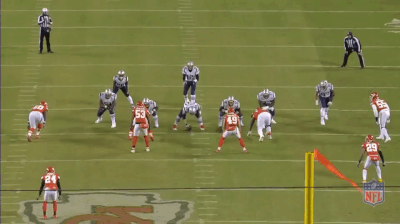
- The core of the New England offensive line will be tested like never before against Donald, who joins J.J. Watt (in 2014) as the only defensive players with triple-digit pressures in a single season over the past 10 years.
- Donald (20.5 sacks) regularly made himself at home in the opponent's backfield, but none of Ndamukong Suh (4.5), Dante Fowler (2) nor Michael Brockers (1) managed to consistently bring down the opposing quarterback.
- Fowler and Suh have at least consistently provided pressure. The Patriots' performance against the spread has been severely impacted based on how many times Brady has been sacked, and the Los Angeles defense managed to post the league’s third-highest pressure rate (53%) this season.
- The Rams certainly boast the league's most fearsome interior pass rush, but the Patriots are better equipped than most to deal with it considering Shaq Mason (No. 1), Joe Thuney (No. 8) and David Andrews (No. 7) rank among PFF's top 10 players at their position.
Next we'll check out the Rams' offensive line compares against the Patriots' pass rush.
- Sullivan (No. 31) is the Rams' only offensive lineman graded outside of PFF's top 10 players at their position.
- Still, the Patriots don't boast much of a formidable pass rush outside of Trey Flowers, as they finished the season ranked 30th in adjusted sack rate.
- They at least did a good job at consistently pressuring the opposing quarterback, as the Patriots were one of just seven defenses to post a pressure rate of at least 50% this season.
- Goff has actually graded out worse than Brady when under pressure in passer rating (No. 22 vs. No. 15) and completion rate (No. 24 vs. No. 22). Both signal callers ranked among the league's bottom 10 quarterbacks in yards per attempt under pressure.
Running Backs
Gurley played a career-low 32 snaps during the Rams’ NFC championship win over the Saints and ran 15 pass routes compared to 14 for C.J. Anderson.
It would make sense for the Rams to feature the league’s highest paid running back in the biggest game of the season, but they’re clearly not afraid to utilize a two-back committee.
Meanwhile, the Patriots have once again employed a full blown committee backfield since Rex Burkhead returned to action in Week 13.
No. 3 RBs have helped swing DFS slates in each of the past two Super Bowls
Pats vs. Falcons: James White (6-29-2 rushing, 14-110-1 receiving)
Pats vs. Eagles: Corey Clement (3-8-0 rushing, 4-100-1 receiving)
…
This year's candidate: Rex Burkhead pic.twitter.com/CG1FuMtTwT— Ian Hartitz (@Ihartitz) January 28, 2019
We can calculate where the Rams’ and Chiefs’ offensive lines hold the best advantages against their opponent’s defensive line with help from the fine folks at Football Outsiders — specifically, their adjusted line yards per rush metric, which takes all running back carries and assigns responsibility to the offensive line based on an opponent-adjusted set of variables.
- Combined Directional Adjusted Line Yards per Rush: The sum of an offensive line’s adjusted line yards per rush to a certain area of the line and the opposing defense’s adjusted line yards allowed per rush to the same area. A higher number (green) is good for running backs, while a lower number (red) indicates that matchup’s offense could have some trouble running the ball.
- Both the Rams (No. 1) and Patriots (No. 3) boasted a top-tier offensive line in adjusted line yards per rush, but L.A. (No. 21) and New England (No. 26) have also employed underwhelming front-sevens in adjusted line yards allowed per rush.
- The Patriots are set up particularly well over right tackle, where they consistently bashed the Chiefs during the AFC Championship Game. Overall, the Patriots averaged an absurd 6.15 adjusted line yards per rush over right tackle this season.
- It would behoove the Patriots' offense to get the hell away from Donald and Co. by running around left end, where the Patriots rank sixth in adjusted line yards per rush and face a Rams defense that ranked 25th.
- The Action Network's Sean Koerner likes Sony Michel as a Super Bowl MVP longshot thanks in large part to his trend of averaging 94.2 rushing yards when the Patriots win, compared to only 46.2 yards in losses.
- It's hard to understate just how dominant the Rams' offensive line was all season.
Todd Gurley = amazing
CJ Anderson = apparently still good
…
Rams offensive line = historically greatMost adjusted line yards per rush since 1996 (when Football Outsiders began tracking):
1. 2018 Rams (5.49) 👀
2. 2018 Saints (5.19)
3. 2002 Broncos (5.13)
4. 2000 Rams (5.09)— Ian Hartitz (@Ihartitz) January 2, 2019
- The biggest problem for the Patriots' defense could be on runs up the middle, where they rank 27th in adjusted line yards allowed per rush and are facing the Rams' league-best line at grinding out yards up the gut.
- An inside-run heavy gameplan would seemingly be better news for Anderson's usage. Sean McVay clarified that Gurley's reduced usage in the NFC Championship wasn't because of an injury.
- Gurley caught at least three passes in 13-of-16 games this season. The Rams could look to run the ball more in an attempt to avoid the Patriots' lock-down secondary, although their best bet might be to utilize Gurley more as a receiver to exploit the Patriots' slow-footed linebackers.
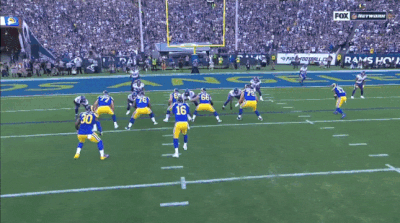
Wide Receivers
The Rams have moved forward with Josh Reynolds in place of Cooper Kupp (knee, IR) in three receiver sets. Robert Woods has worked as the offense's primary slot receiver, as L.A. has relied more on motion and play-action to create confusion as opposed to switching up their formations and/or personnel groupings. Brandin Cooks remains plenty involved.
Meanwhile, the Patriots have largely funneled their passing game through Julian Edelman since Flash Gordon was suspended indefinitely. Chris Hogan and Phillip Dorsett have emerged as the clear No. 2 and No. 3 receivers, respectively, but Cordarrelle Patterson has maintained some involvement as the No. 4 option.
We can determine where each receiver will line up, as well as which cornerback they’ll see the most of with help from the snap counts provided by PFF.
We’ll also use PFF to compare each receiver and defender’s respective yards per route run and yards allowed per cover snap. NFL.com provides each receiver and cornerback’s height, weight and 40-yard dash time from the NFL combine, while DraftScout.com provides pro-day numbers.
- Snap Percentage: Each receiver’s respective percentage of snaps spent as the offense’s left, slot or right wide receiver, along with each cornerback’s respective percentage of snaps spent covering the offense’s left, slot or right wide receiver.
- Physical: Each player’s respective height (inches), weight (pounds) and 40-yard dash (seconds). The players with the biggest advantages are denoted in green, while those facing a mismatch are in red.
- Combined Yards Per Route Run: The sum of each receiver’s yards per route run in the slot or overall with their opposing defender’s yards allowed per cover snap rate. A higher number (green) is better for the receiver, and a lower number (red) is better for the defender.
First we’ll look at Patriots receivers against the Rams' secondary. Their targets per game reflect the period between Weeks 16 and the AFC Championship Game with Gordon out of the lineup.
- Edelman and Brady have earned the benefit of the doubt in just about every matchup, but Robey-Coleman is one of the league's premiere slot corners and earned PFF's No. 6 overall grade among 112 qualified cornerbacks.
- The Patriots could attempt to take advantage of Robey-Coleman's slight stature by increasing Hogan and/or Gronk's snaps in the slot.
- The Rams haven't asked any of their cornerbacks to shadow since Aqib Talib returned from injury in Week 13. This means that the Patriots should be able to attack Marcus Peters as they please.
- Peters has been a liability for most of the season, ranking among the league's bottom 12 cornerbacks in receptions, catch rate, yards, yards per reception, touchdowns and quarterback rating allowed.
- Dorsett boasts the game's largest speed advantage on the outside against Talib and Peters. It's also fair to question if Talib (32 years old) still boasts sub-4.5 speed.
Now let's see how Rams receivers stack up against Patriots cornerbacks. Their targets per game reflect their 10 games this season without Cooper Kupp (knee, IR).
- The Rams offense is similar to their defense in that they don't make a habit of moving around their skill position players. Cooks, Woods and Reynolds are expected to line up as the offense's left, slot and right wide receivers, respectively, on the majority of their snaps.
- The Patriots have consistently evolved their coverage schemes this season. Still, it seems likely they'll want to match their No. 1 cornerback on the Rams' No. 1 receiver as often as possible.
- Gilmore is plenty used to playing inside at this point anyway, as he's lined up in the slot on 42% of his snaps this postseason. He's typically been at his best when covering more physical receivers such as Woods compared to speedsters like Cooks.
- Jason McCourty and his brother Devin (the Patriots starting free safety) helped limit Tyreek Hill to a pedestrian 1-42-0 line on three targets during the AFC Championship Game with consistent double teams. It would make sense if Cooks receives similar treatment.
- Reynolds is the largest non-tight end on either team, although the Patriots cornerbacks aren't exactly undersized in their own right.
Other Matchup Notes
The following chart is comprised of the six categories that make up my league-wide weekly matchup manifesto. You can learn more here.
- Both the Rams (12.1%, 1st) and Patriots (9.4%, 12th) boasted strong explosive pass play rates during the regular season, but the Patriots defense (9.4%, 15th) was significantly better at limited big plays through the air than the Rams (11.1%, 30th).
- The same story is true on the ground to a lesser extent, as both the Rams (3.1%, 15th) and Patriots (2.5%, 21st) boasted respectable explosive run play rates, but the Patriots defense (3.0%, 20th) was significantly better at limited big plays on the ground than the Rams (4.4%, 30th).
- The Patriots and Rams finished the season ranked first and third, respectively, in situation neutral pace.
- The Patriots (No. 4) and Rams (No. 2) ranked among the league’s best defenses in takeaway rate this season. The offenses of the Patriots (No. 6) and Rams (No. 9) also didn’t make a habit of playing sloppy football and ranked inside the league’s top 10 teams in lowest turnover rate.


